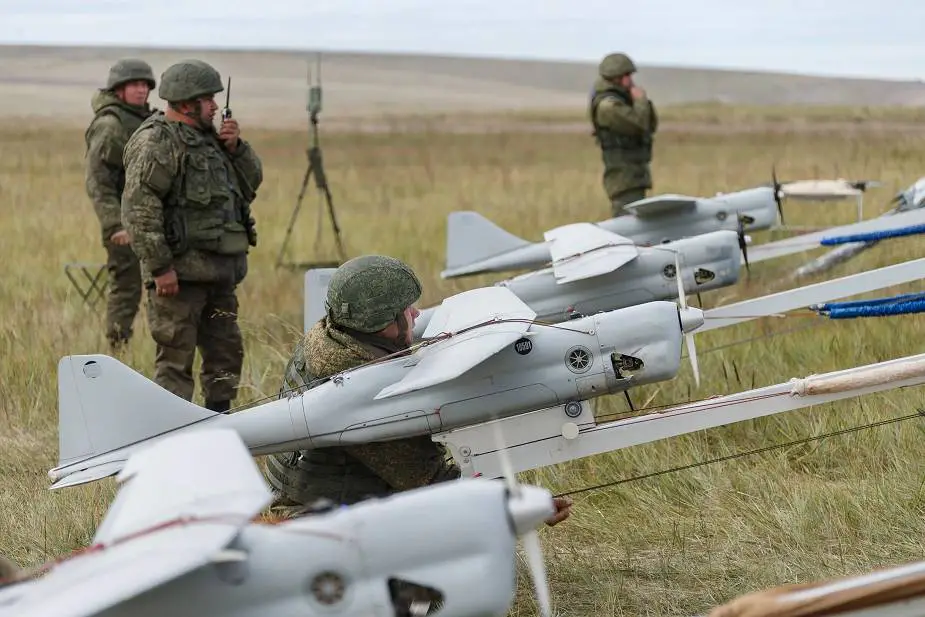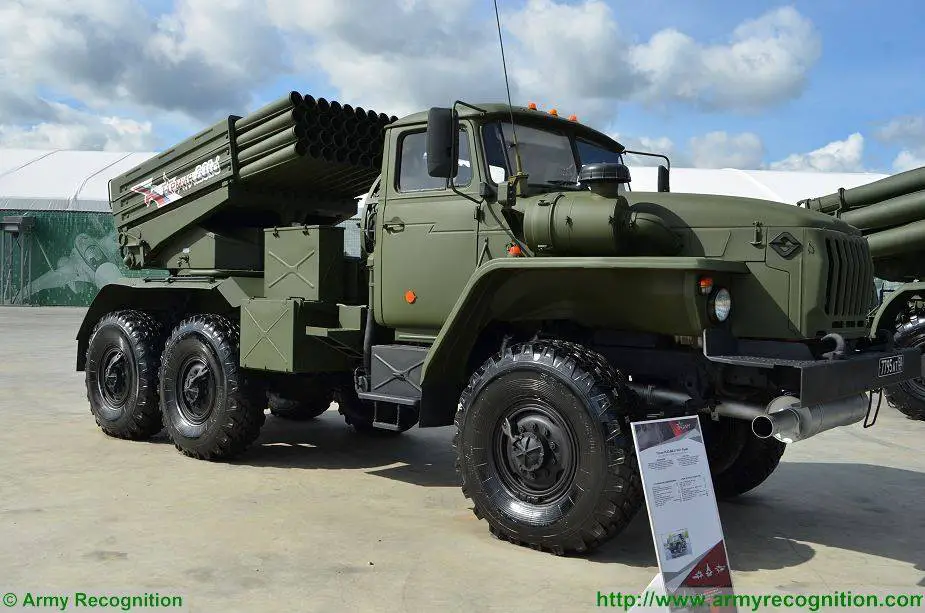Russian army uses drones to detect targets for howitzers and rocket launchers of artillery units
According to information released by the Russian MoD (Ministry of Defense on July 15, 2020, Russian army artillery units of the motorized rifle formation of the Eastern Military District deployed in Buryatia destroyed a column of adversary hardware from Grad BM-21 multiple launch rocket systems and 152mm 2S3 Akatsiya self-propelled guns using reconnaissance drone at Tsugol range in Transbaikalia, the Russian Defense Ministry said.
Follow Army Recognition on Google News at this link

Orlan-10 UAV Unmanned Aerial Vehicle is used by Russian army artillery units to conduct reconnaissance missions and detect targets. (Picture source Russian MoD)
During the artillery military exercise of the Russian army, drones were used to detect a mechanized adversary column at a distance of over 10 kilometers and transmitted coordinates to the command post. 2S3 Akatsiya 152mm self-propelled howitzers were engaged to destroy the column. BM-21 Grad 122mm MLRS (Multip;e Launch Rocket System) completed the destruction of the conditional adversary.
Since many years, Russia has started the development of radar systems mounted on a helicopter-type drone or reconnaissance electro-optic pod mounted on UAV (Unmanned Aerial Vehicle) to perform reconnaissance missions for artillery units.
Tactical-level artillery units of Russian army use now unmanned aerials systems to spot ammunition depots, missile systems, armored, and other mechanized units in the areas of amassment.
The Orlan-10 UAV is used by Russian army artillery units to conduct reconnaissance missions and revealed top priority targets, which required high-precision aiming. The coordinates were transmitted to the artillery crew in real-time, allowing for long-range point artillery strikes.
The Orlan-10 is an unmanned aerial vehicle (UAV) developed by the Special Technology Center (STC) in Saint Petersburg for the Russian Armed Forces. It carries a day-light camera, a thermal imaging camera, a video camera and a radio transmitter in a gyro-stabilized camera pod that is fitted under the fuselage. The cameras provide real-time intelligence, 3D maps, surveillance, and aerial reconnaissance of ground-based targets.
The Orlan-10 can transmit telemetry data to a range between 120 km and 600 km from the launch station and endure for approximately 18 hours. Its cruising and maximum speeds are 110 km/h and 150 km/h respectively.It can fly at a maximum altitude of 5 km in all weather conditions.
The 2S3 Akatsiya is a Russian-made 152 mm self-propelled howitzer based on a tracked armored vehicle. The 2S3 can fire a wide range of ammunition including the HE-FRAG OF-540, which is fitted with an RGM-2 fuze, weighs 43.5 kg, contains 5.76 kg of TNT, has a maximum muzzle velocity of 655 m/s and a maximum range of 18,500 m. Other types of projectiles fired include BP-540 HEAT-FS (also referred to as HEAT-SS, for spin-stabilised), HE/RAP (High-Explosive Rocket-Assisted Projectile) with a range of 24,000 m, AP-T, illuminating, smoke, incendiary, flechette, scatterable mines (anti-tank and anti-personnel) and the Krasnopol laser-designated projectile covered in the entry for the 152 mm 2S19.

2S3 Akatsiya 152mm self-propelled howitzer (Picture source Army Recognition)
The BM-21 is the most used and popular Multiple Launch Rocket System (MLRS) in the world. It is equipped with a pod of 40 launch tubes of 122 mm caliber arranged in a rectangular shape that can be turned away from the unprotected cab.
The BM-21 can launch rockets directly from the cab or remotely from outside of the truck cab with a 64-meter cable. Standard rockets have a maximum firing range of 20 km, but with the use of the latest generation of rockets the range can be increased up to 35/40 km.

BM-21 Grad 122mm MLRS Multiple Launch Rocket System. (Picture source Army Recognition)


























